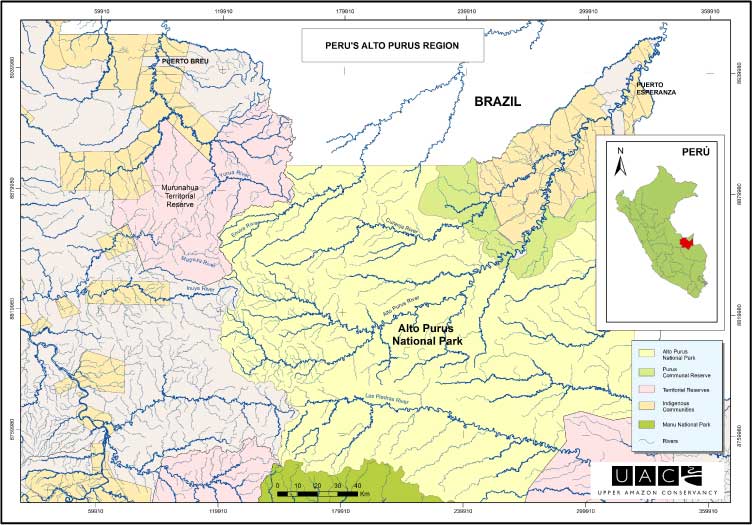The Culina, whose self chosen name is Madija – ‘Those who are people’ – are an indigenous group living in five territories on the Brazil-Peru border. These territories are all recognized indigenous lands which the Madija share with groups such as the Huni Kuin, Yaminawa and others and centre around the Jurua and Purus rivers, tributaries of the Amazon.
One of the most numerous indigenous groups in this area, figures from the turn of the millennium estimate the Madija population to be around three thousand, with the majority living in Brazil. The Madija speak a highly variable language known as Culina Madiha, of the Arawa linguistic family. It is of great interest to linguists and lexicographers as the male and female dialects are quite distinct and women speak versions of Culina Madiha almost exclusive to their own village.
The Madija are especially well known for two aspects of their culture. First is that their cosmological, social and physical words revolve around a central axis, the principle of reciprocity. The structure of the universe, made up of sky (Meme), Earth (Nami) and the world below (Nami budi) is echoed in the Madija’s physical living arrangements. Reciprocity also governs their social relationships where the ideal is a cyclical continuation of a sharing system by which the Madija live by giving and gaining sustenance from one another. The second outstanding feature the Madija are known for is their use of music, which is also profoundly social. Young men play flutes to send love messages, the intended recipient is know to all and so the sound of the flute allows the whole community to share acollectively amorous experience. Madija women are know to sing almost all day and music and song are thought to evoke all worlds, expressing the whole.
The Madija operate similar subsistence strategies to other groups in the area, they have a mixed economy and hunt, gather, fish and keep pigs. They have traded with the outside world during various times in their history, beginning with commercial plant traders from whom they purchased industrial products in return for forest goods. However relations werenot always as amicable as reported in these cases. WIth the dawn of the rubber boom came the Madija’s first concerted contact with Whites, Brazilian rubber extractors and Peruvian Cacheiros. The Madija were subjected to repeated violent incursions, ‘correiras’, from these strangers, taken as slaves whilst fleeing to more inaccessible parts of the forest. After forced contact for a long period, an alliance with the Huni Kuin (Cashinahua) in 1984 allowed the demarcation of the Alto Purus region as indigenous land , a move later formalized by FUNAI.
Further lands have since been claimed in nearby areas such as the Humaita river zone and in the area of The Pau Stream and legal ownership established. Despite this the Madija still suffer illegal incursions by ranchers, poachers and loggers but remain committed to expelling these raiders, continuing their traditional practices and finding a long term solution to ceasing unwanted and illegal contact.


